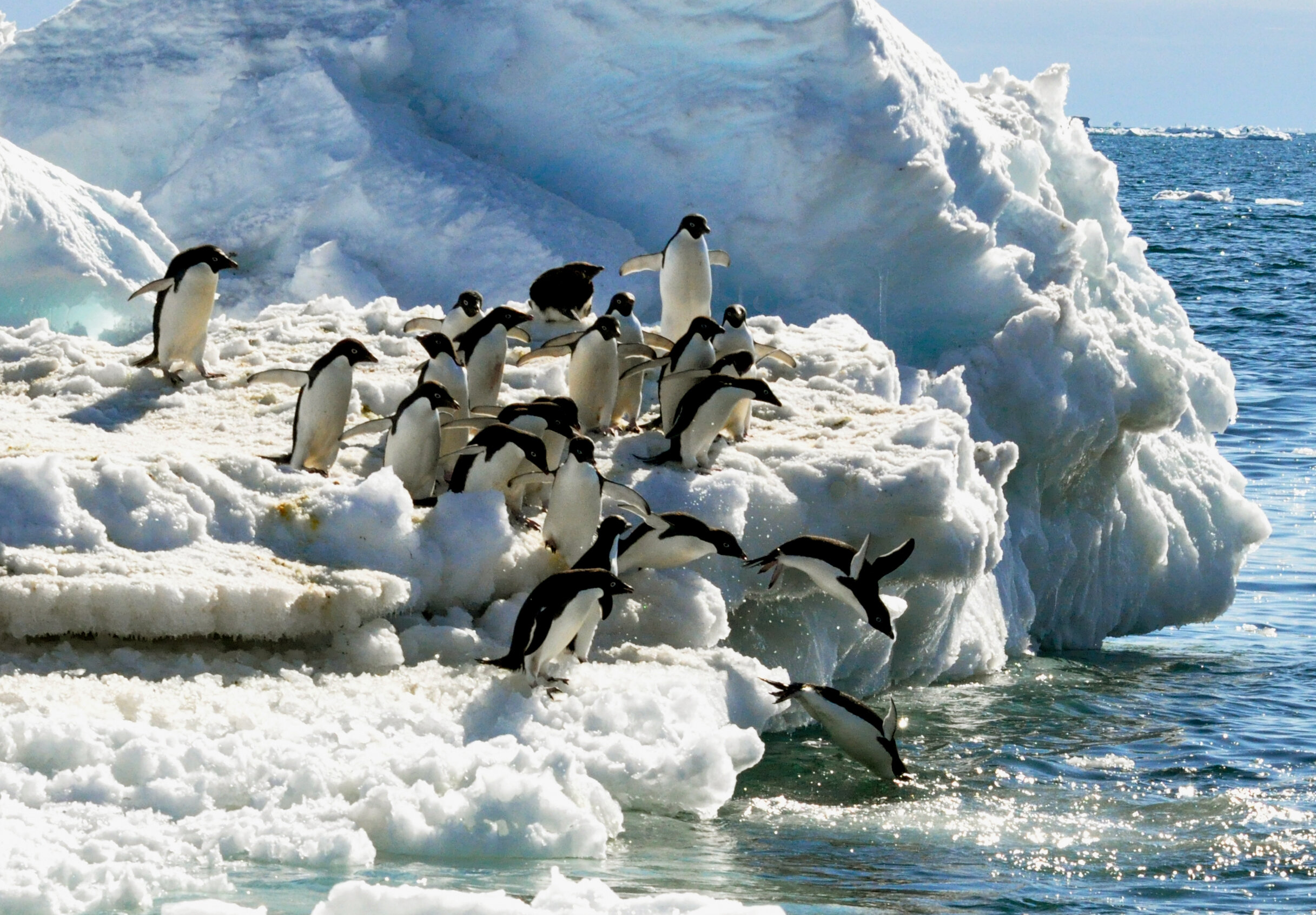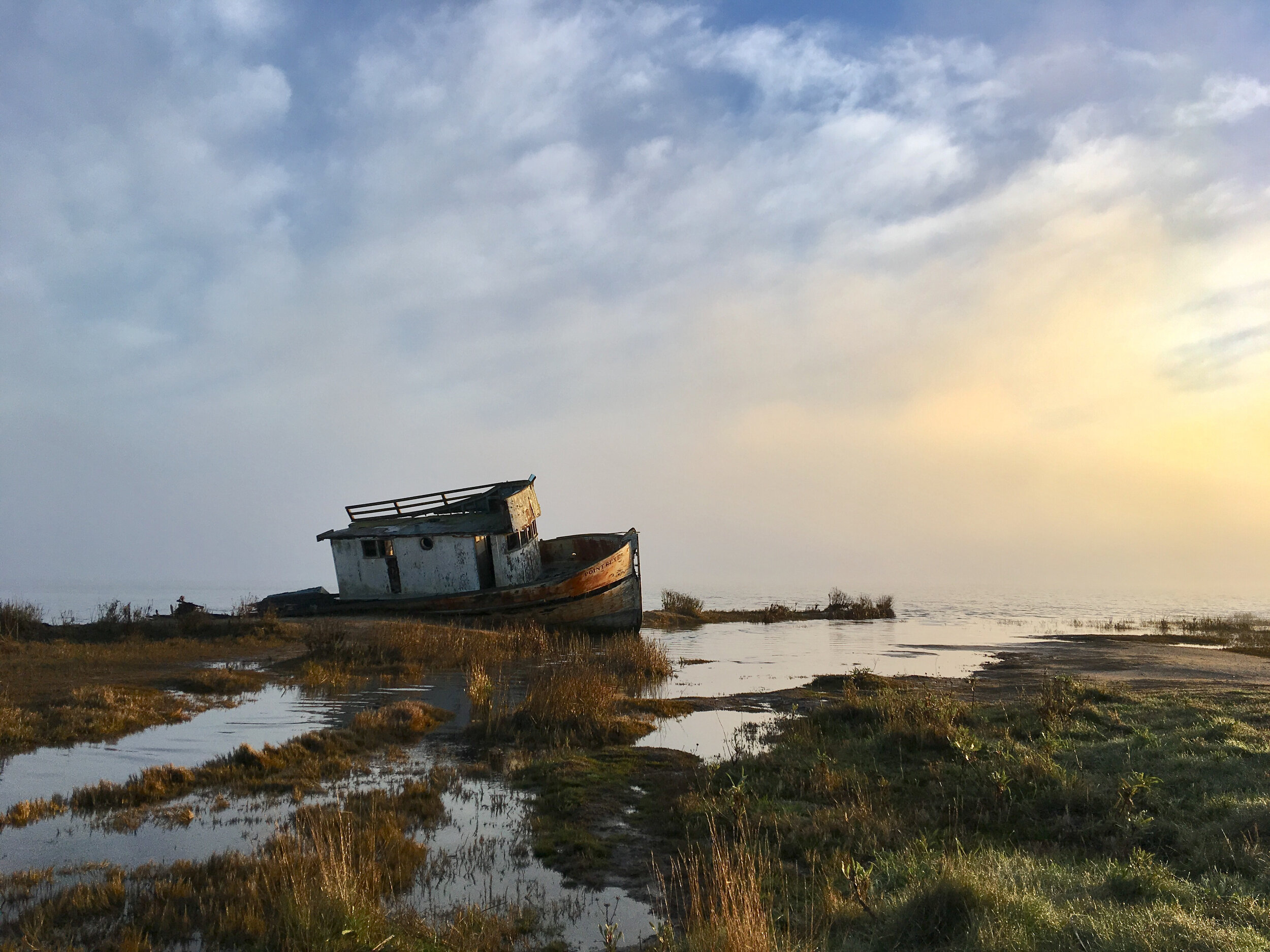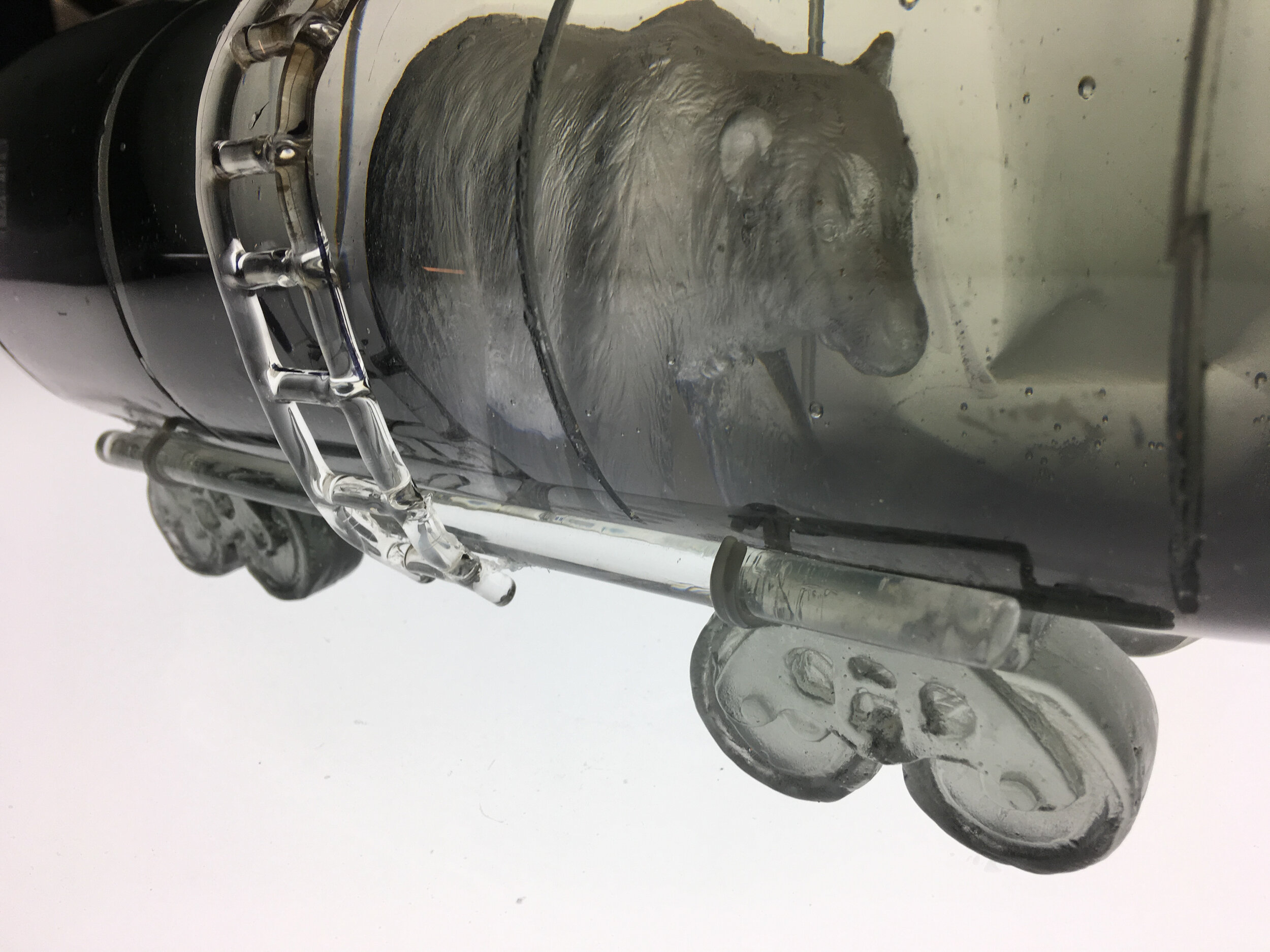
About Sally
I am not a “professional artist.” I began taking pictures in the late 1940s with a Baby Brownie and since then I have thought of myself as a photographer. I had my own darkroom as a child, but what I wanted was to work more with my hands. Early on I planned to work as a garage mechanic, but, I wound up working as a writer and teacher: I taught resource management and policy first in The College of Forestry in Ann Arbor, Michigan and later and longer in the College of Natural Resources at UC Berkeley.
But the working hands part never went away and I also love making a mess. When I got to California in the late 1970s, I began working first with wood and then with glass. Glass is more expensive but more fun: I love it that you can look away from a glass saw or grinding disc and get a court burn rather than lose a digit—and when the glass art and craft field emerged from centuries of domination by folks in Murano, I got on board.
Now that I am retired, I can pursue my interest in protecting fragile environments without footnotes and “publishing.” I focused first on the Poles, where I have traveled frequently, and then on the Tomales Bay area, where I now live. I can make a great piece or a big mess. Even when the piece turns out well, I have likely made at least a small mess. I love it.
At the North Pole. The dot is from a small ceremony for passing inside the arctic circle.

In Inverness
Beginning glass artists are frequently advised to pick a limited palette of glass colors and stick with it for a while. Each color reacts differently in different processes, with other colors, and with heat. It takes a while to get used to it. So I stuck with the blues, whites and greys of ice for quite a while. But the greens, golds and browns of the hills around Tomales Bay near my home also called to me.
Although this landscape is also fragile, when I turn to Inverness colors and themes, it is less in protest or teaching mode than in celebration. I made my first box for the Gallery Route One Box Show together with the help of my neighbor Ramon Cadiz. I still did not know how to photograph glass; this is just a snap shot on the dining room table.
The Box Show also led me to think about boxes.
I began making little glass boxes—in part because they have four sides and could display the colors of the four seasons as the grass greens up and browns off in summer. Making boxes is also a good learning project. Glass does not particularly like being square. But i kept up at it for several years. Now I frequently just play with the colors and the mountain at the end of my road.

Some Collaborators
A lot of the artists I study and work with talk about spending years, frequently many years, figuring out how to do their work. Because I got serious about glass as I was pushing 70, I took lots of classes to help me find my way. Perhaps because I taught for 35 years, I like shared learning situations and I love great teachers. I have had many. The most important for my work have been casters: Gina Zetts, Johanna Manousis, Erica Tada, and Alicia Lomne.
Gina Zetts
Although I have had a lot of casting classes, the first one that stuck was with Gina Zetts. The basic process is lost wax: make an object in wax, make a plaster mold around it, melt out the wax, and fill the hole with glass. Gina and I have worked together, with me as her student or as collaborators, ever since.
Below is the class project from Gina’s beginner class. If you can get Dumbo in and out of wax and plaster and into glass without snapping off his trunk, you are on your way. The toothpicks allow the air out of the mold so that the glass can flow in.
Alicia Lomne
Pate de verre [French for paste of glass] is probably most reflective of my focus on fragility. It uses a plaster mold but not necessarily wax: You make a plaster mold around a clay one and then tap glass granules into the plaster, creating a pattern and hoping the glass paste will stay in place through the firing.
The ones on the left and right are pate de verre, not the one in the middle.
I made the boat above after a class with Alicia and didn’t like it at all. So I took it to my next class with her and Alicia and I redecorated it, build a new mold around it and fired it again.
Pate de verre boats are fragile and frequently do not float or hold water. I find that particularly appropriate for making arks.
Richard James
I have begun to experiment with using decals. This is part of a series of small plates I made using images taken by Richard James, photographer and anti-plastics activist.
Janette Koga
I met Janette in one of my casting classes. She is an expert in plaster having spent her career making molds for prosthetics. After visiting in Inverness, she surprised me with the plaster mold I used to cast a wonderful piece of the mountain across Tomales Bay from my home.
Mary Ann King
Mary Ann King
Mary Ann and I worked together at Cal for many years. She is now a river restorationist studying to be certified as a botanical illustrator. We have recently begun to work together on a glass project celebrating West Marin flowers.


















